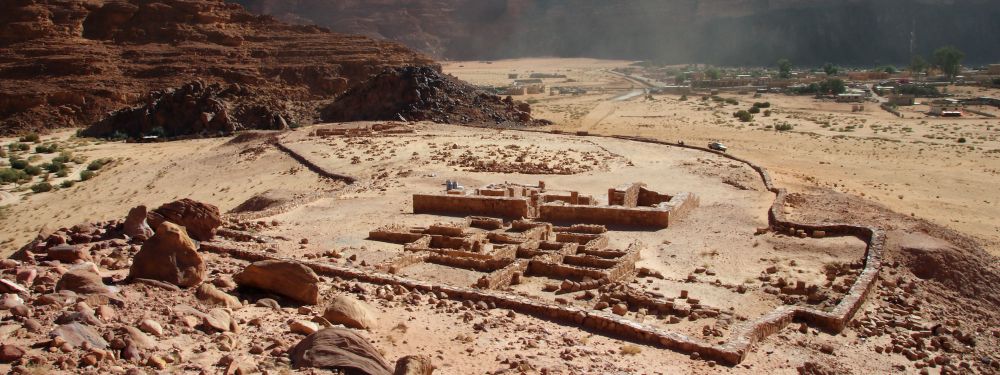Food History of Nabataean Temple, Wadi Rum, Jordan
The Nabataean Temple in Wadi Rum is not as commonly known for its food heritage as it is for its archaeological significance and breathtaking desert landscapes. However, the broader region of Wadi Rum, which was once part of the Nabataean Empire, shares a rich culinary history that is deeply intertwined with Bedouin culture. Traditional Bedouin cuisine, which sustained the Nabataeans, has been influenced by the arid environment and nomadic lifestyle. It includes a variety of dishes based on grains, dairy, and meats other than cow. In the times of the Nabataeans, food was a symbol of hospitality and an important part of community life. Meals would often consist of locally sourced ingredients, cooked in simple, yet flavorful ways.
Top 10 Must-Try Food Dishes in Wadi Rum
- Mansaf (non-veg) - Jordan's national dish made with lamb cooked in a sauce of fermented dried yogurt and served with rice or bulgur.
- Mutabal (veg) - A savory dip made from cooked eggplant blended with tahini, garlic, and lemon juice.
- Maqluba (non-veg) - A traditional dish that translates to "upside-down" with layers of meat, rice, and fried vegetables.
- Fatteh (veg) - A dish consisting of pieces of fresh, toasted, or stale flatbread covered with other ingredients like chickpeas and yogurt.
- Tabbouleh (veg) - A fresh salad made with finely chopped parsley, mint, tomato, onion, bulgur, and seasoned with olive oil and lemon juice.
- Falafel (veg) - Deep-fried balls made from ground chickpeas or fava beans, often served in a pita or with a side of tahini sauce.
- Zarb (non-veg) - A Bedouin barbecue dish, which consists of meat, and sometimes vegetables, cooked in an underground pit.
- Maglouba (non-veg) - A dish made with meat, rice, and fried vegetables, similar in preparation to Maqluba.
- Hummus (veg) - A well-known Middle Eastern spread made from cooked, mashed chickpeas blended with tahini, olive oil, lemon juice, salt, and garlic.
- Ful medames (veg) - A hearty dish of cooked fava beans served with olive oil, cumin, and garlic typically enjoyed for breakfast.
Top Famous Restaurants in Wadi Rum and Their Signature Dishes
While there are not as many restaurants located directly at the Nabataean Temple, Wadi Rum offers various dining experiences, mostly found in the camps around the desert where traditional meals are prepared. Here's a list of notable places to enjoy a meal:
- Al Captain Camp
Address: Wadi Rum Protected Area, Wadi Rum Village
Famous Food: Zarb (non-veg) - A traditional Bedouin dish of roasted meat and vegetables from an underground pit.
- Rum Stars Camp & Bedouin Adventures
Address: Wadi Rum Protected Area, Wadi Rum Village
Famous Food: Mansaf (non-veg) - Jordan’s national dish with a Bedouin twist.
- Wadi Rum Night Luxury Camp
Address: Wadi Rum Protected Area, Wadi Rum Village
Famous Food: Bedouin BBQ (non-veg) - A delightful variety of meats, including chicken and lamb, grilled in desert style.
- Memories Aicha Luxury Camp
Address: Little bridge, Wadi Rum Protected Area
Famous Food: Traditional Bedouin Buffet (mix of veg and non-veg options) - Includes dishes like hummus, salads, and grilled meats.
- Sun City Camp
Address: Wadi Rum Protected Area, Wadi Rum Village
Famous Food: Maqluba (non-veg) - A casserole with layers of meat, rice, and fragrant spices.
Enjoying local cuisine at these traditional camps often involves communal seating and shared dishes, which is part of the Bedouin dining experience that emphasizes hospitality and community.

